In the case of Toyama. Japan's first implementation of light rail transit (LRT) was used as a catalyst for urban redevelopment.
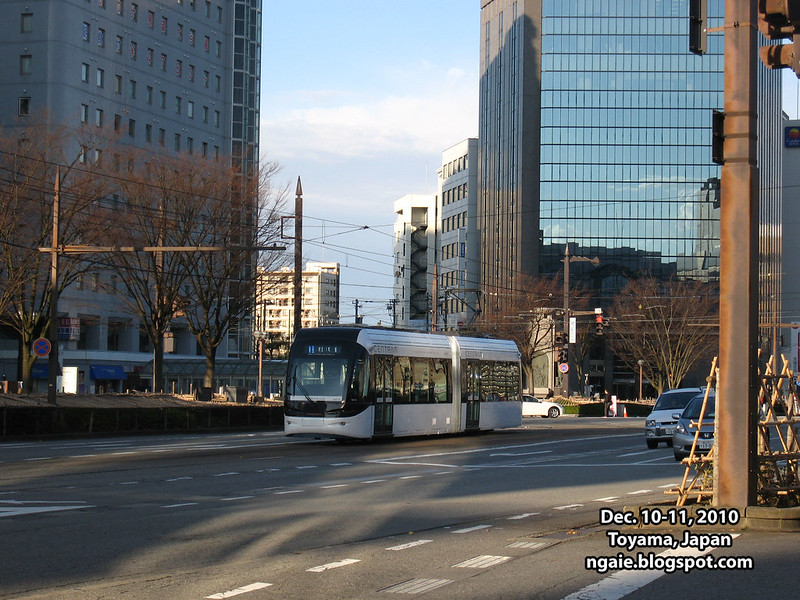
Below is a map of the route we took to go to Toyama from our university's campus (Hiroshima University) in the place known as Saijo. We had to take the Shinkansen or "bullet train" from Hiroshima to Kyoto and then from Kyoto, we transferred to a "Limited Express" train called the "Thunderbird" to Toyama.
View 2010-12-10 Toyama in a larger map
Whereas in North America, where the car is deeply embedded into the public consciousness, where when people do intercity traveling they think in terms of miles or kilometers or expressway/freeway exits, in Japan, for most of the population, people think in terms of railways and railway stations, like which station do you depart and arrive at and how long it takes to get from one station to another.
Because of this, for using public transport, there is a nationwide system which tells you exactly how to get from Point A to Point B, even if you wanted to do intercity travel.
It took 5 hours and 41 minutes to go to Toyama using the Shinkansen and the Limited Express train covering almost 700 km. Transportation is pricey in Japan and it cost an equivalent of 16,070 yen ($160 USD) one way for these tickets.

The tickets. For intercity travel, for some reason, paper tickets are the only way to go. It is not possible to buy train tickets online in Japan.
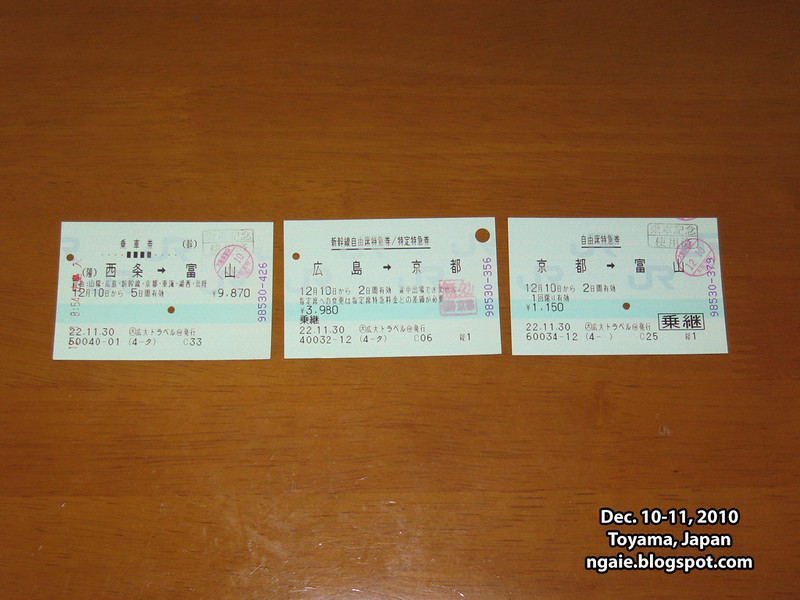
The N700 series Shinkansen train at Hiroshima Station. (Picture not taken by me)

After arriving in Kyoto, we had to transfer to a Limited Express train called the "Thunderbird". (Also not my picture)
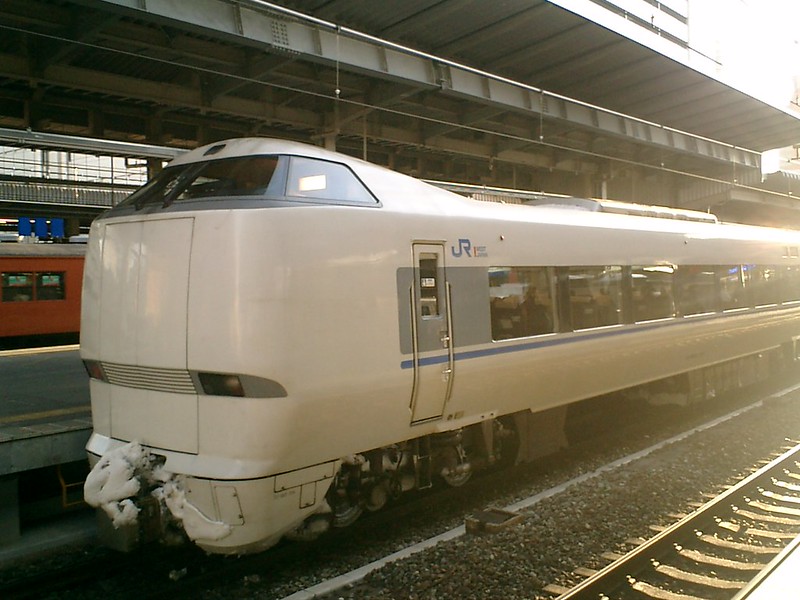
While riding the Thunderbird, I ordered a train bento box (they call them eki-ben) for lunch. What is surprising to many foreigners is that most bento boxes sold in Japan are cold and people just eat them cold. Although I don't really prefer it, but even I had gotten used to eating cold bento boxes.
Such bento boxes usually cost 1000 yen each ($10 USD). While not exactly value for money, there is no other choice unless you bring your own.
Nothing like eating cold, fried shrimp tempura....

At round 3 pm we finally arrived in Toyama, after taking the obligatory group photo, we headed to the city office to get a presentation and explanation of Toyama's efforts at city revitalization using LRT and the "Compact City" concept.
Group photo in front of Toyama's main railway station.
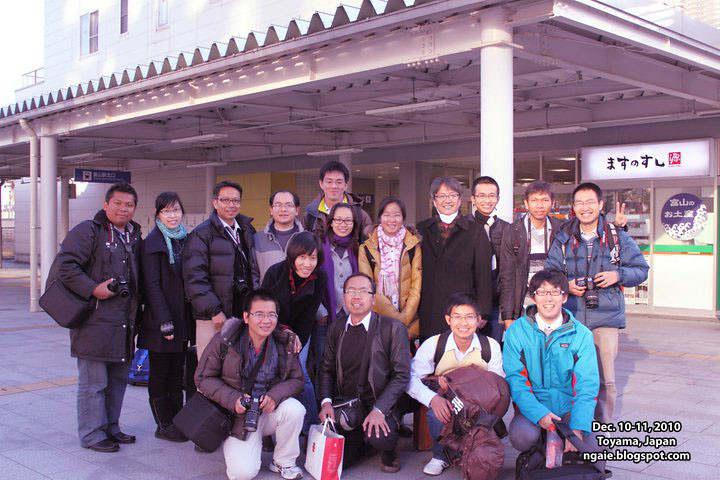
The main attraction, Toyama's LRT. The difference between Toyama's LRT and other streetcar/tram systems in Japan (like the Toei Arakawa Line in Tokyo) is that Toyama's system is Japan's first and so far only modern implementation of an LRT system. This means that it uses modern low-floor vehicles (without steps to enter the train), has level boarding between the platform and the train and uses a proof of payment system where users buy tickets at ticket vending machines before entering the train through any door. On all other streetcar/tram lines in Japan, you have to enter through the back doors, and then pay at the ticket box as your leave through the front door like a bus.
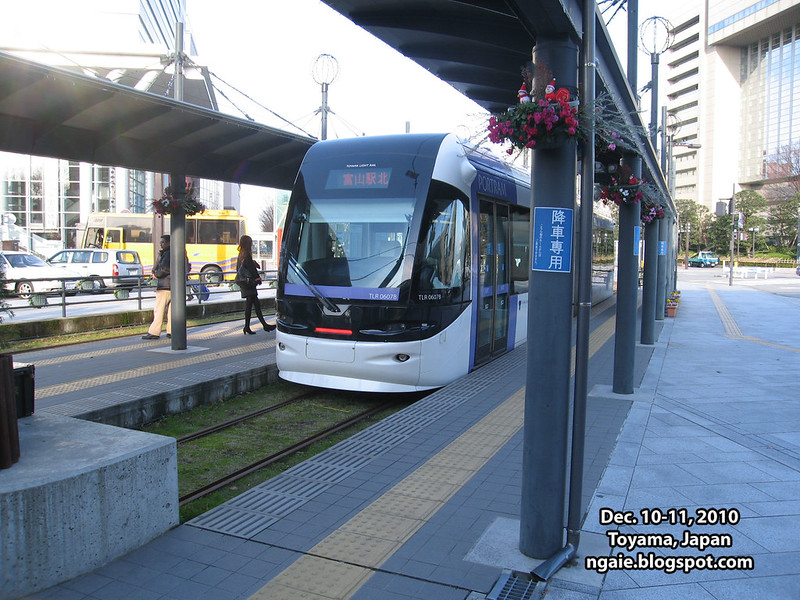
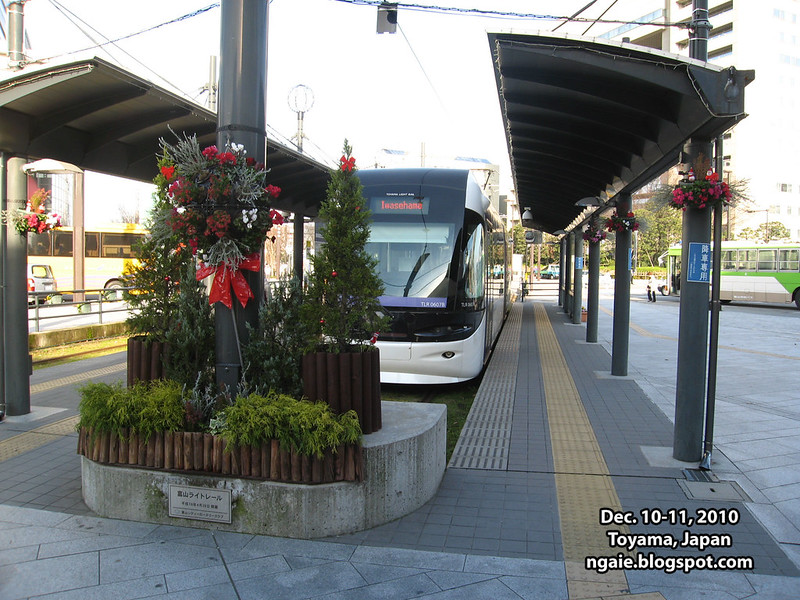
Model of the city at the exposition centre for the LRT system. What is interesting is all the scale models of the trains all move!
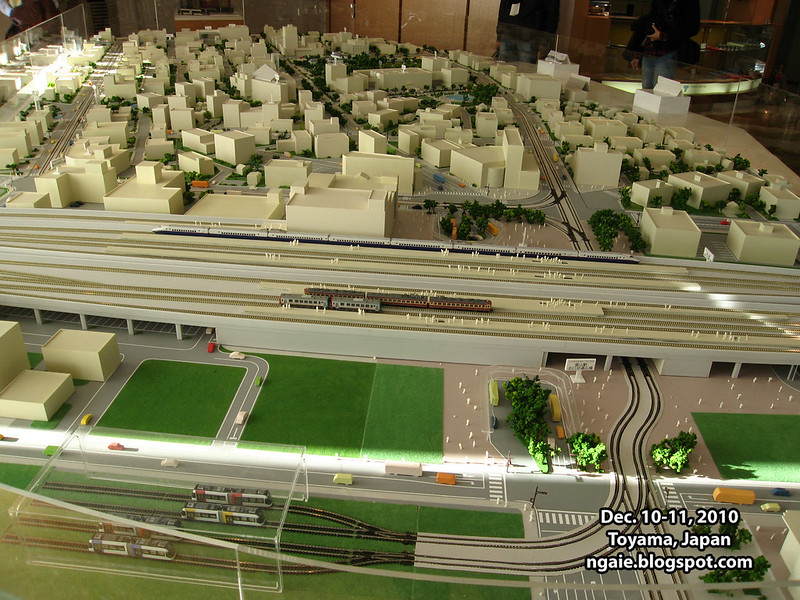
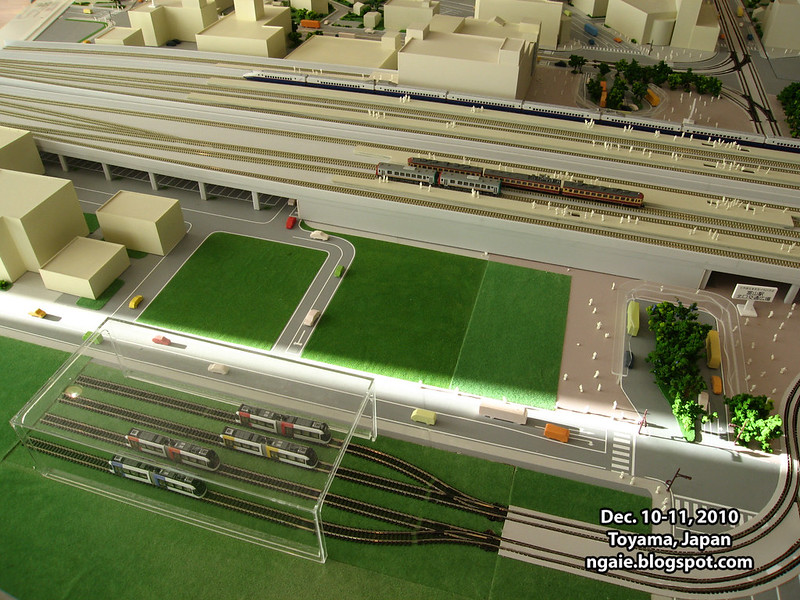

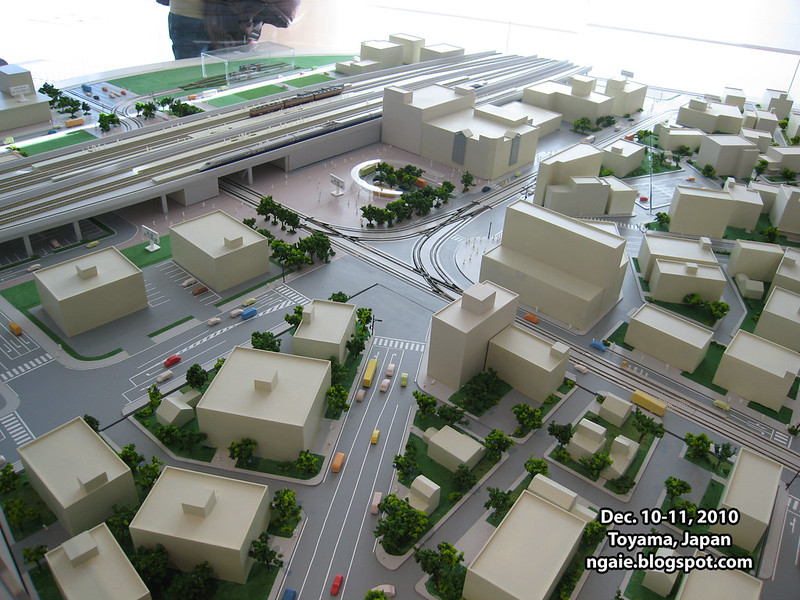
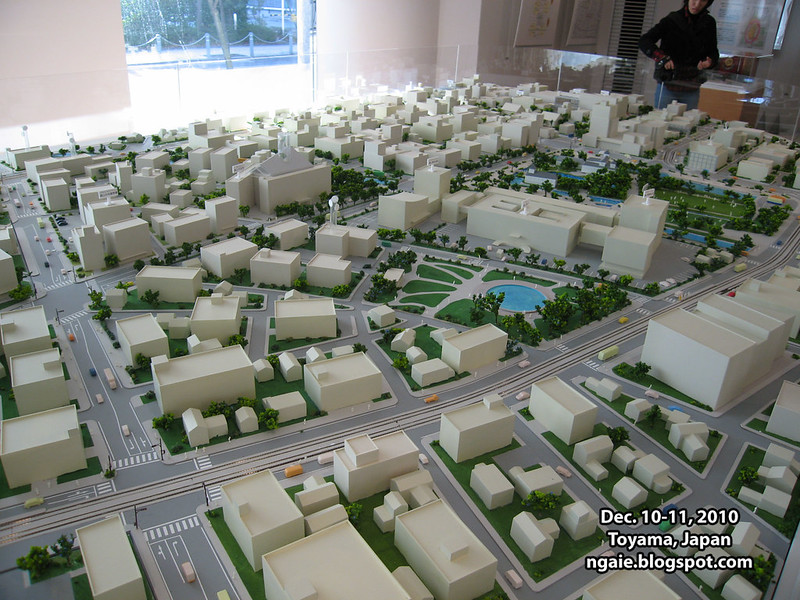
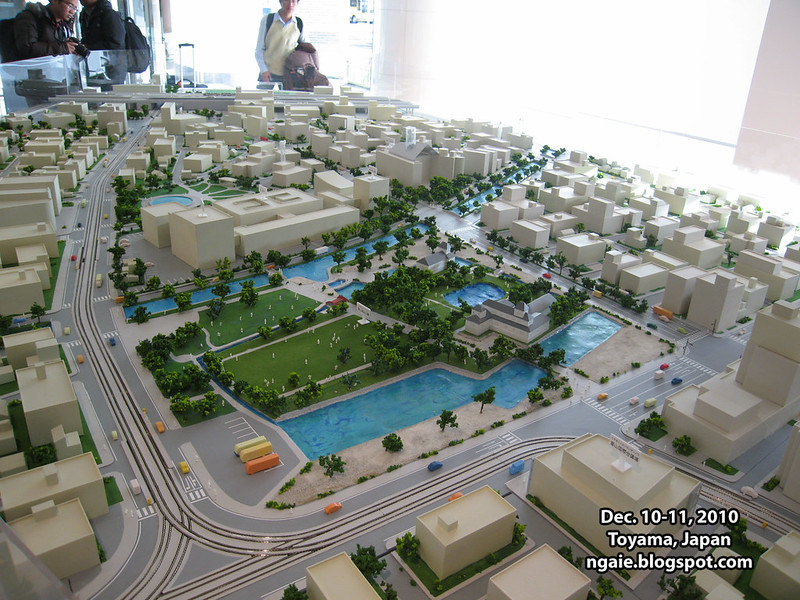
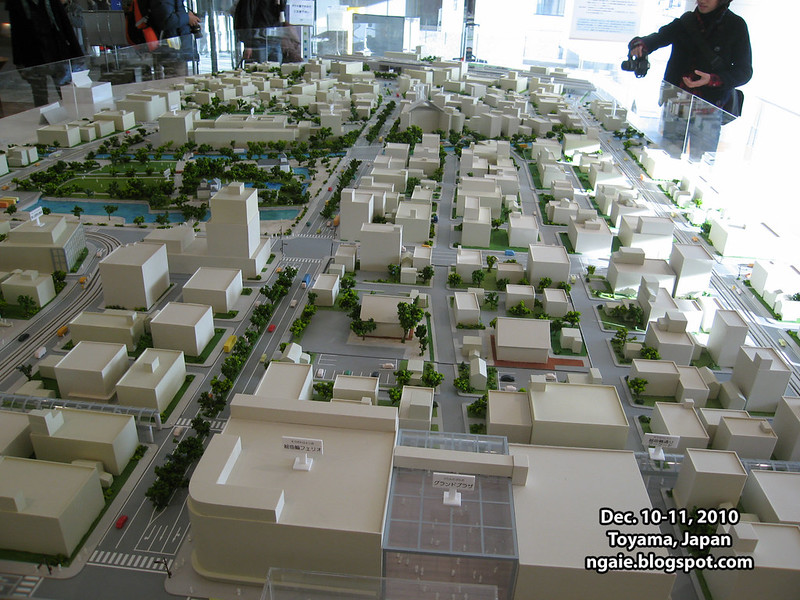
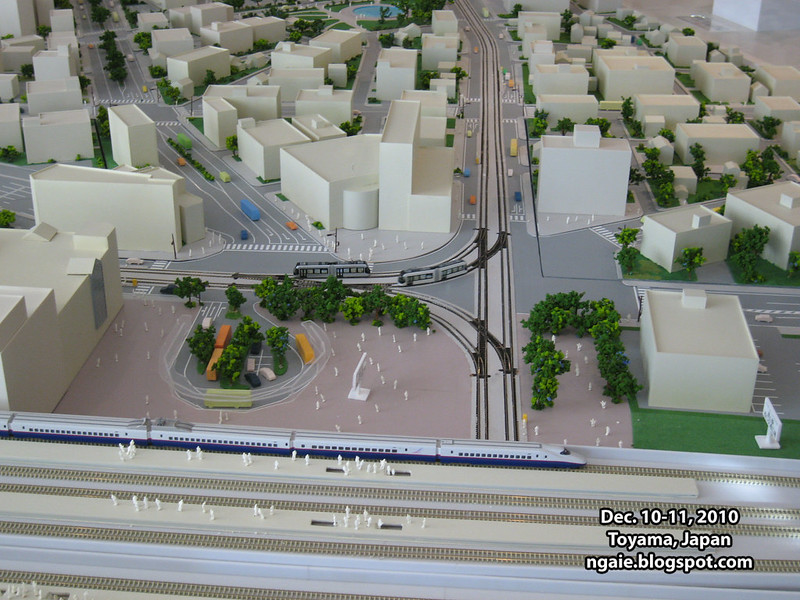
They are obviously really proud of their LRT system as evidenced by all the awards.
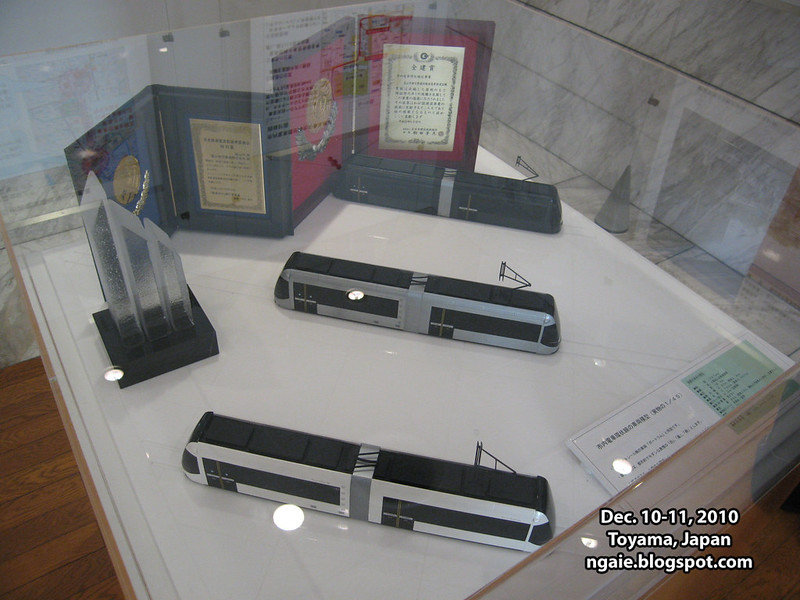
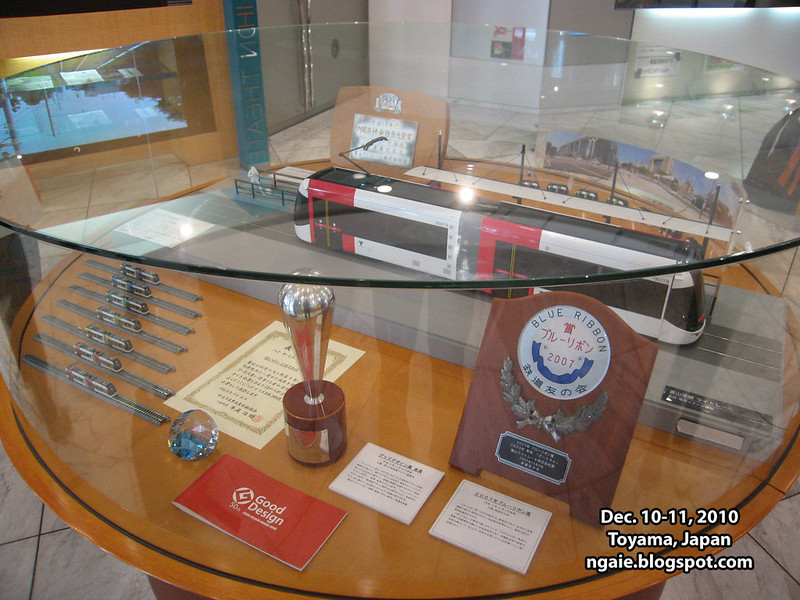
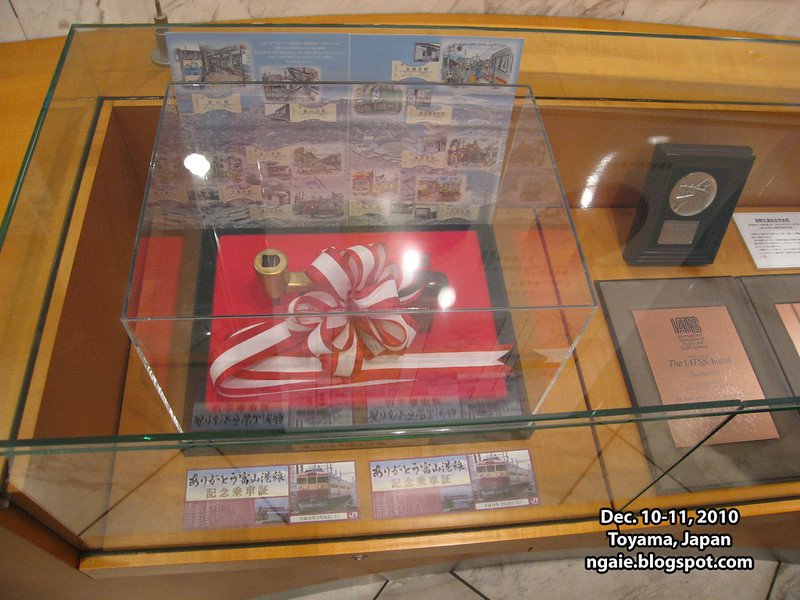

The mayor of Toyama telling us what happened in Toyama and our professor doing rough translations for us.
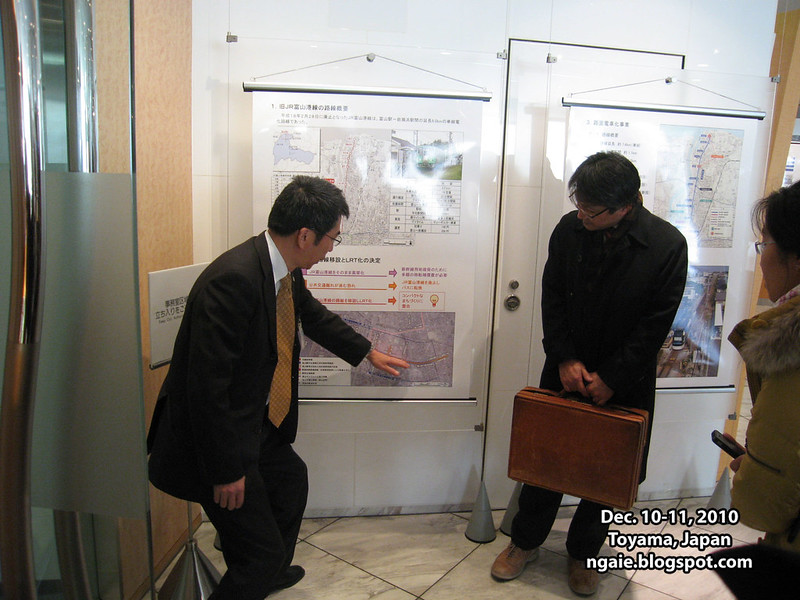
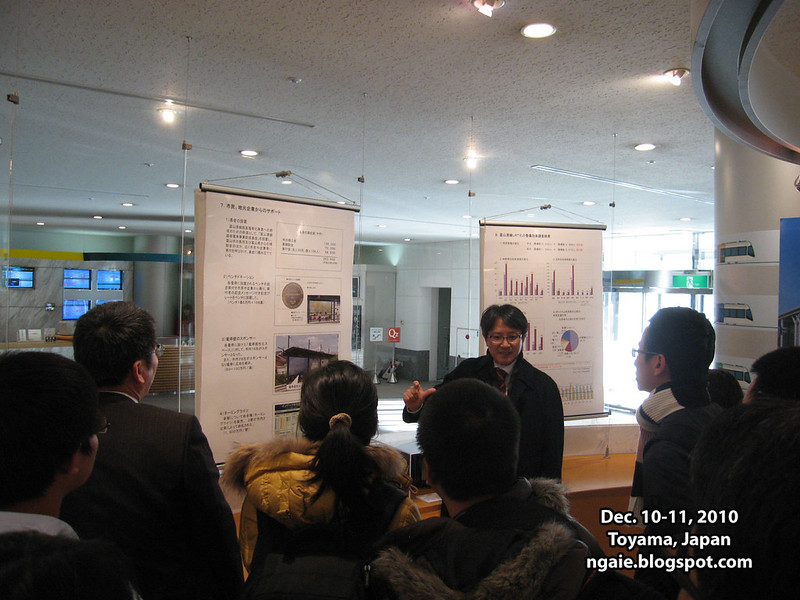
Project storyboards. Shows Japanese-style urban planning.
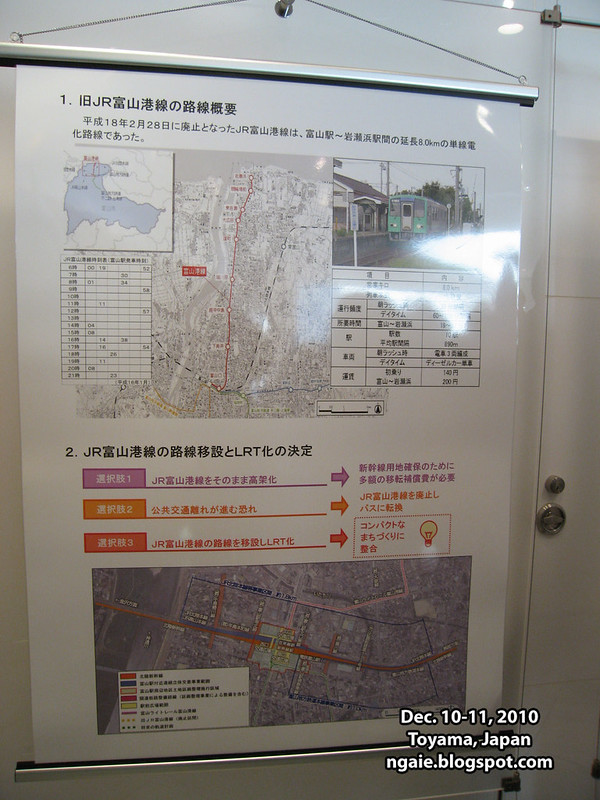

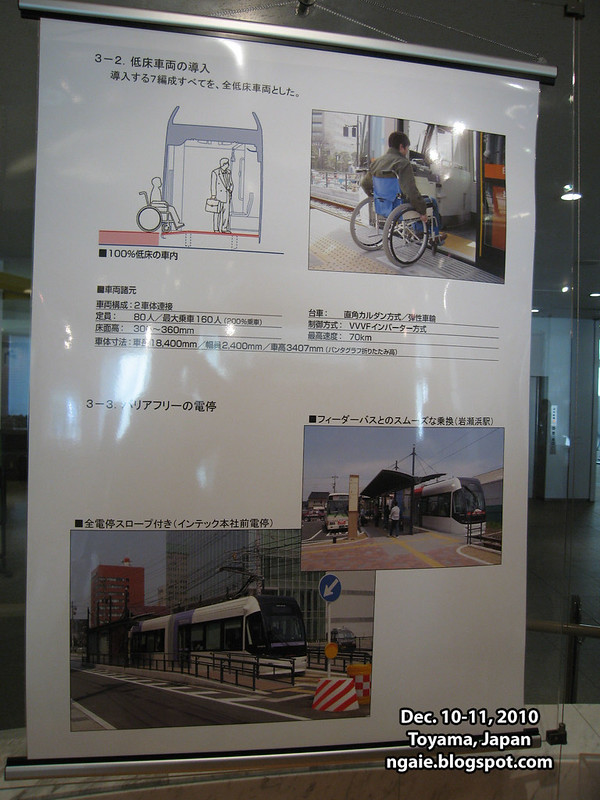
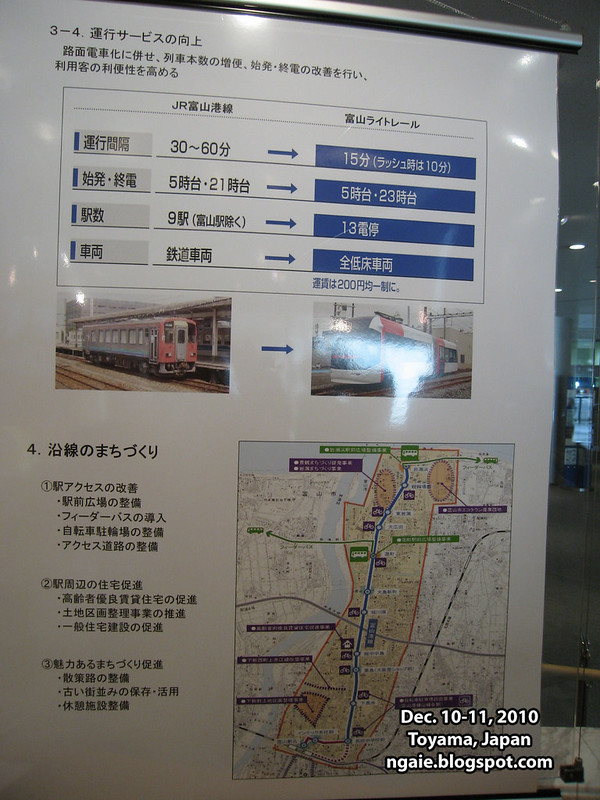
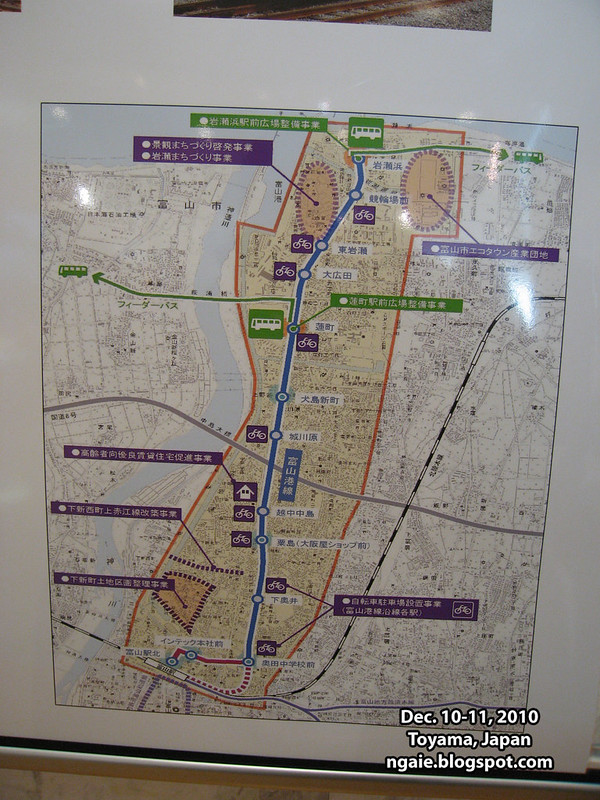
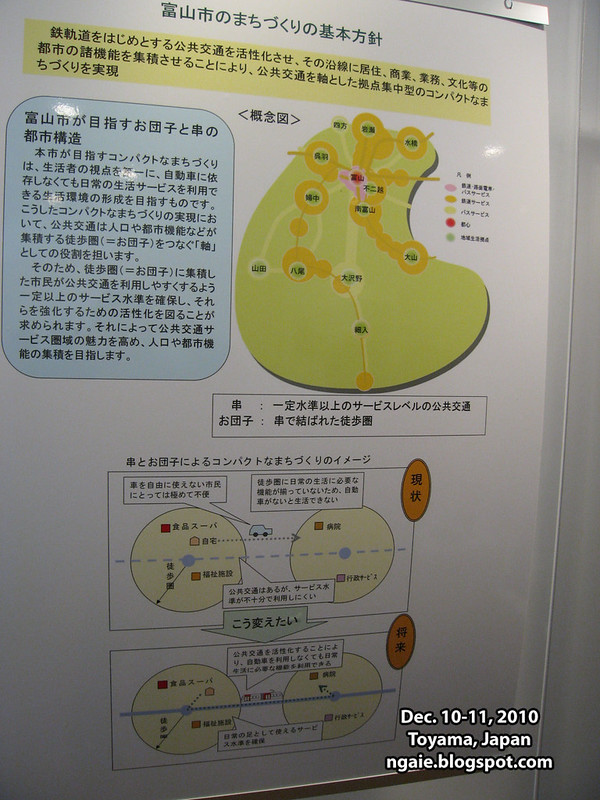
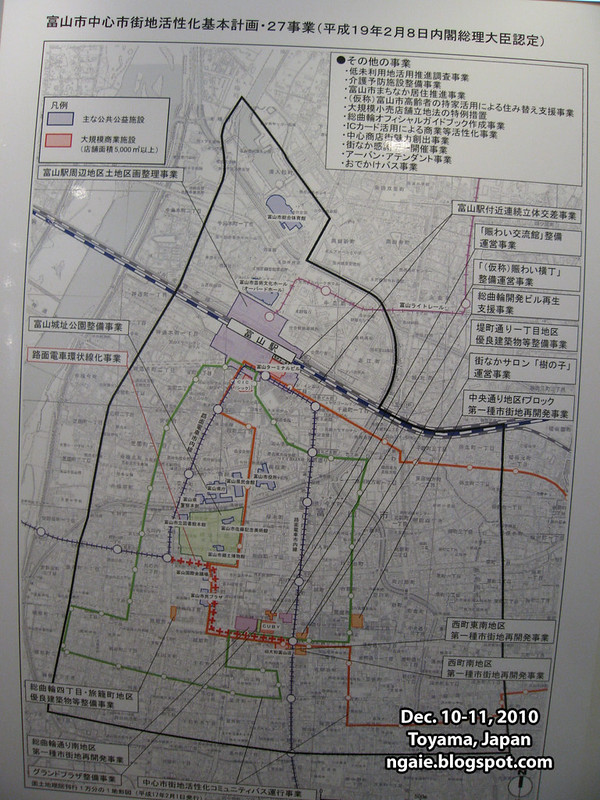
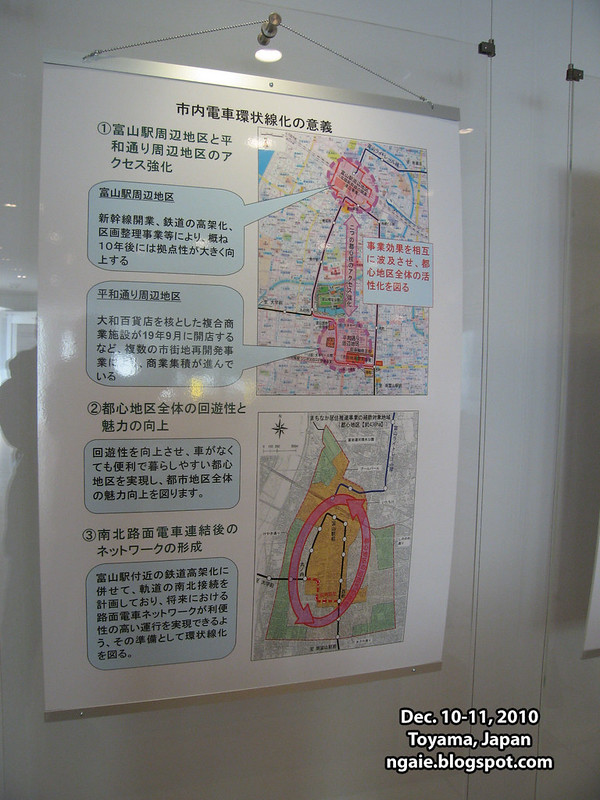
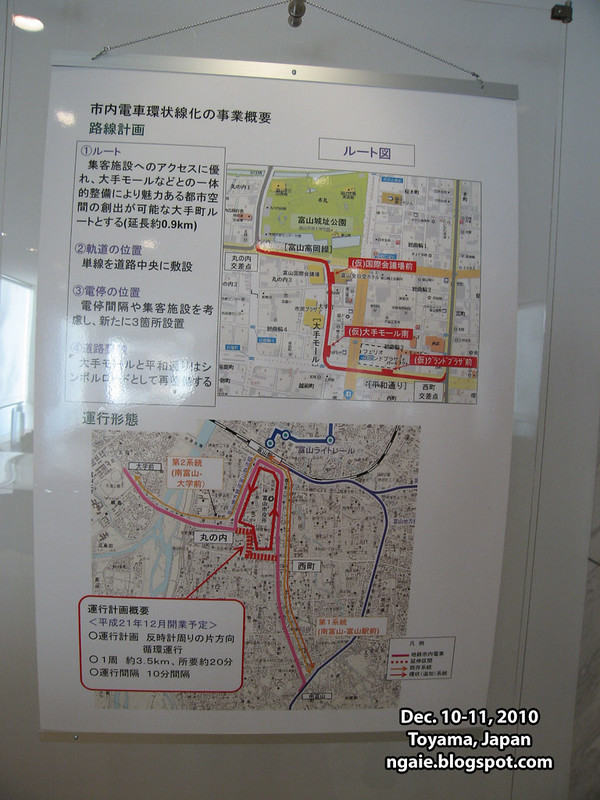
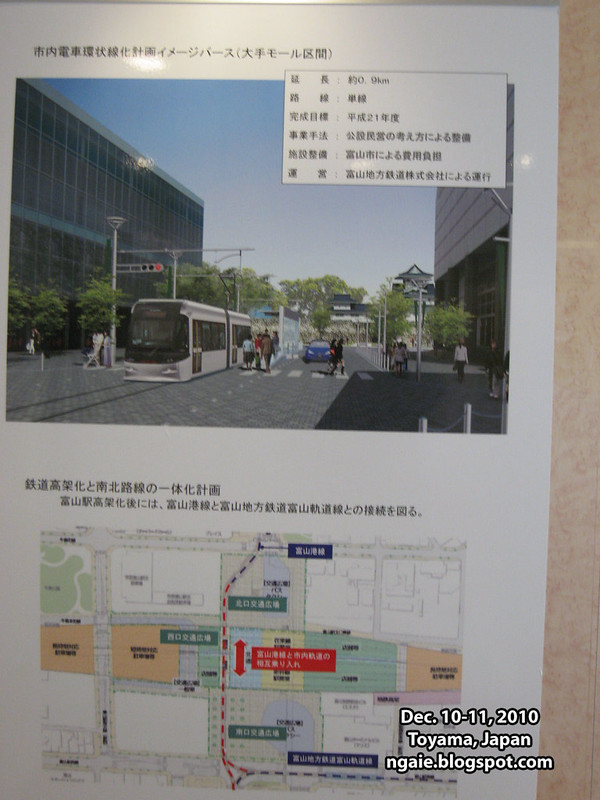
What exhibition centre in Japan would be complete without the sale of omiyage (souvenirs) featuring "original goods". You could buy branded bags and even branded ties!
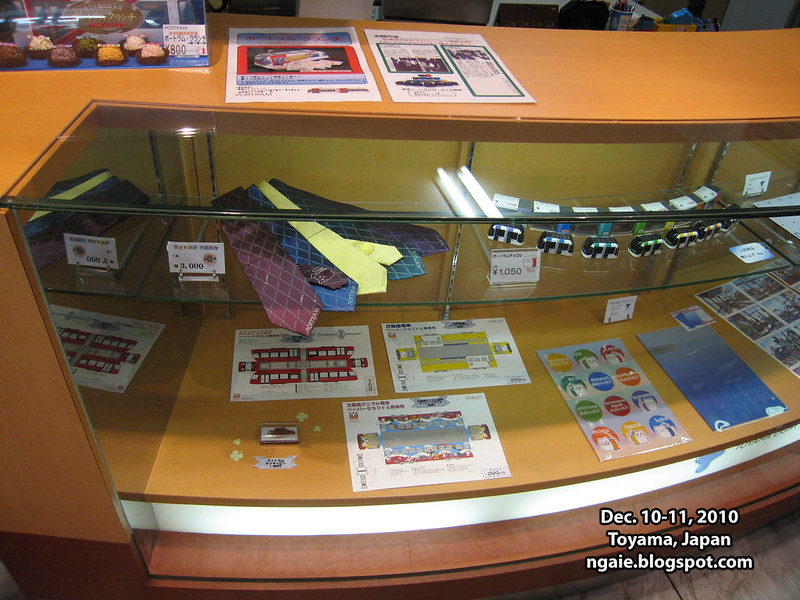
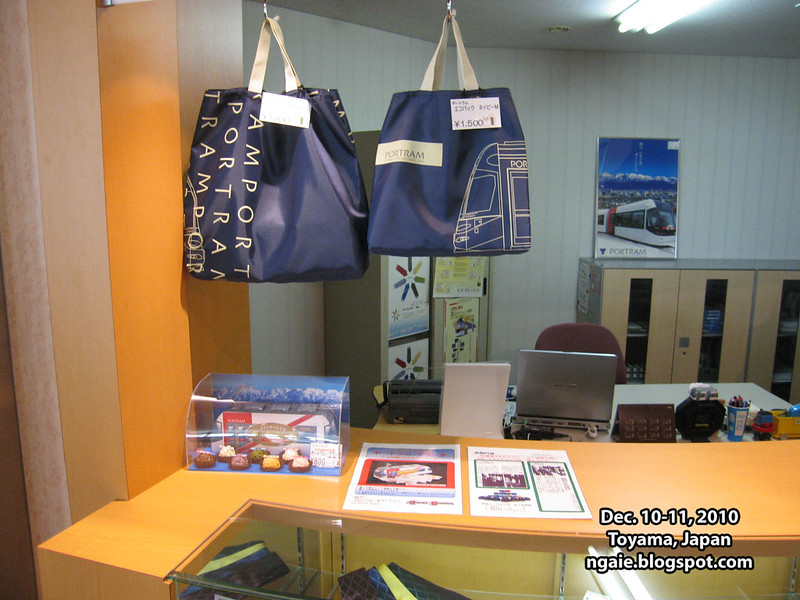
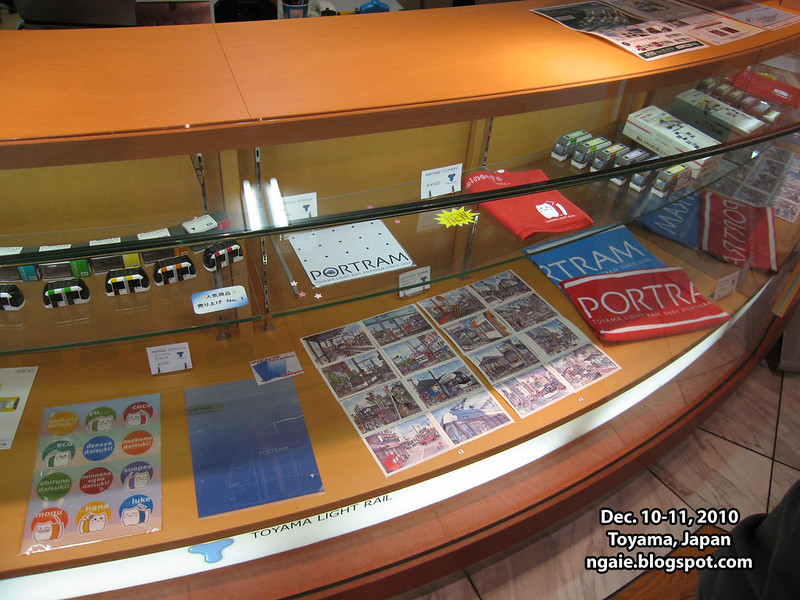
Next, we took the LRT (for free) to visit the operations and maintenance centre.

At the operations and maintenance centre, there was an electric (battery powered) bus developed by Hino Motors (subsidiary of Toyota) which they were testing. It apparently could only operate for 7-8 hours a day for each charge...
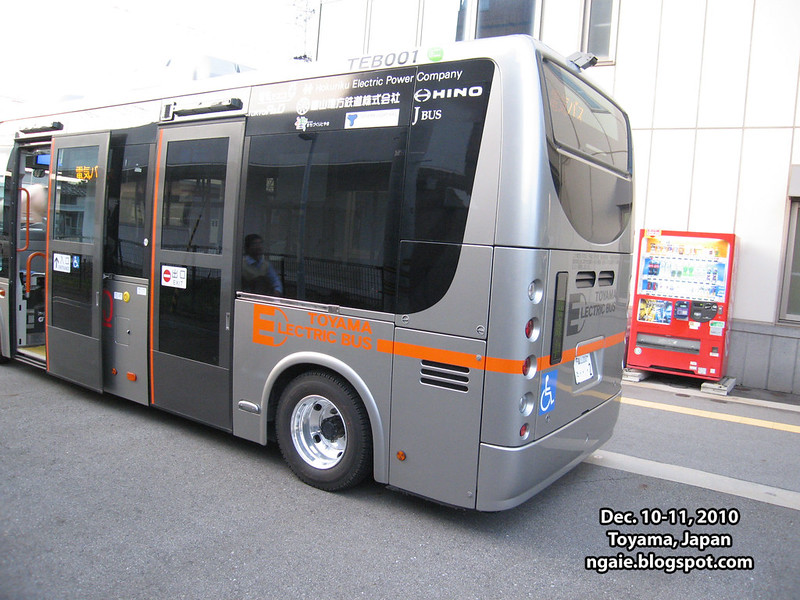
Listening to explanations with regards to the LRT vehicles.

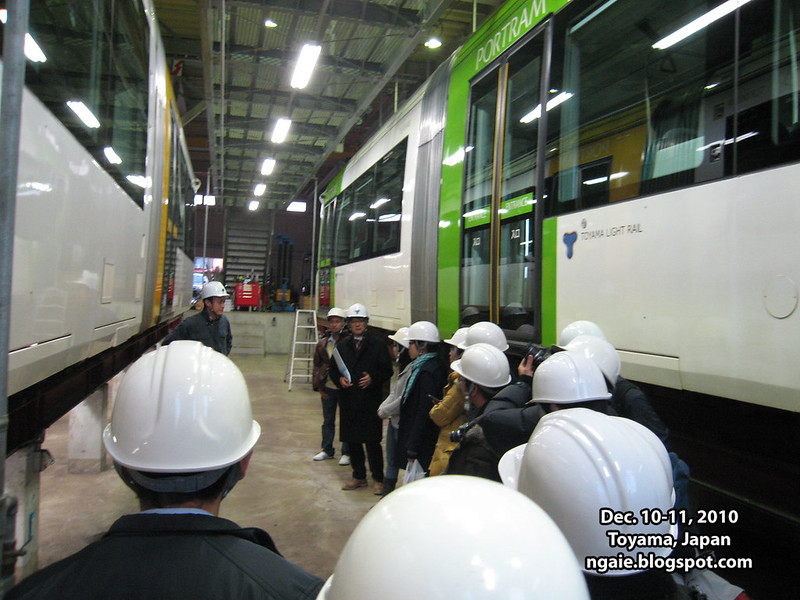
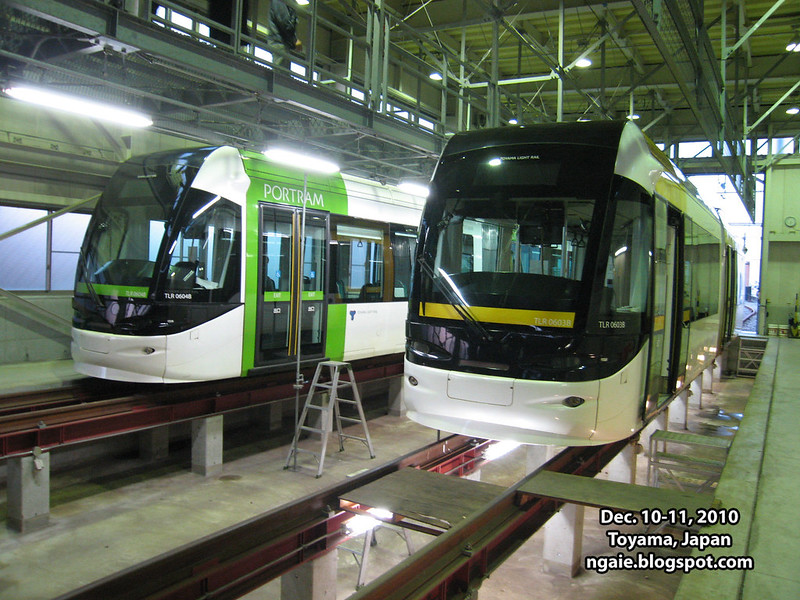
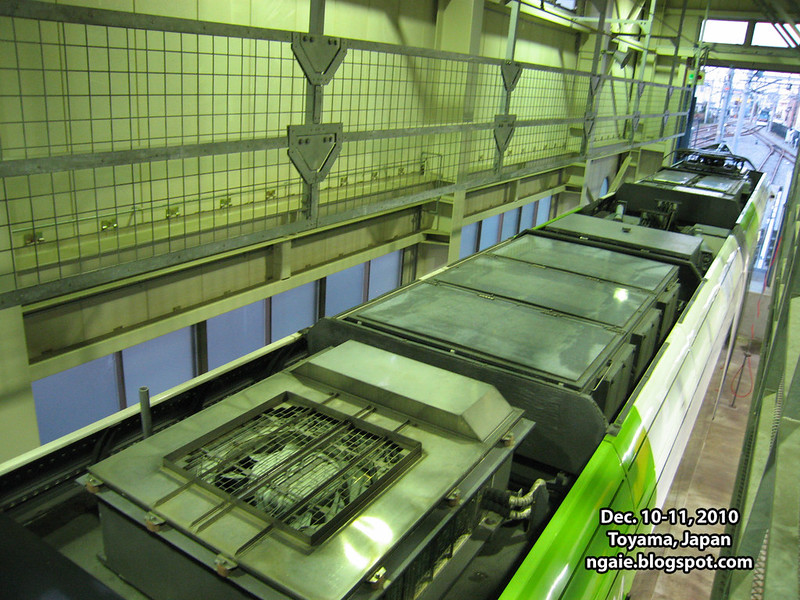
The hotel room I stayed in after the day was over. What's interesting about this room is that there was a sink located on the desk right beside my bed! (Out of all the hotels I stayed in, in Japan, this was the first and last time I had ever seen such a thing)
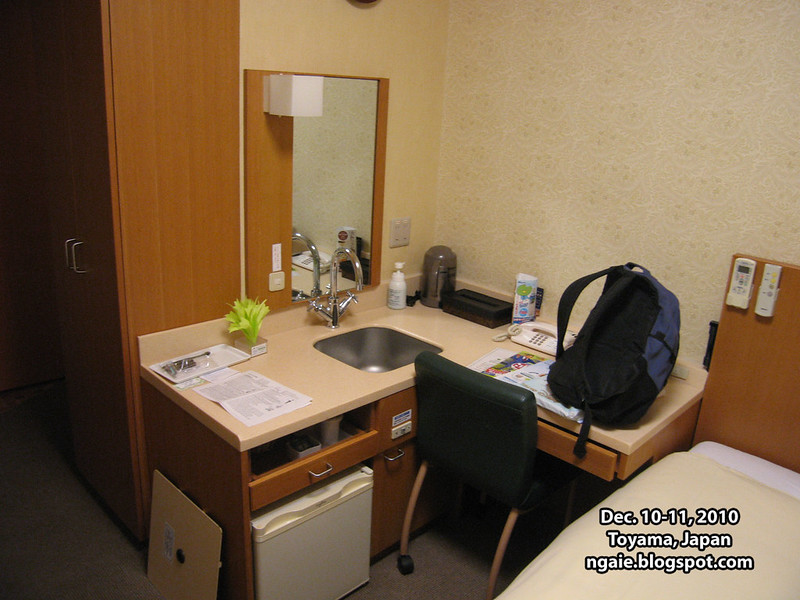
The next day, was basically a free day where our group explored around Toyama and went to the town of Tateyama.
Because Toyama is one of the places which receives a lot of snow during the winter, they have installed public shovels for people to help in digging out the snow!
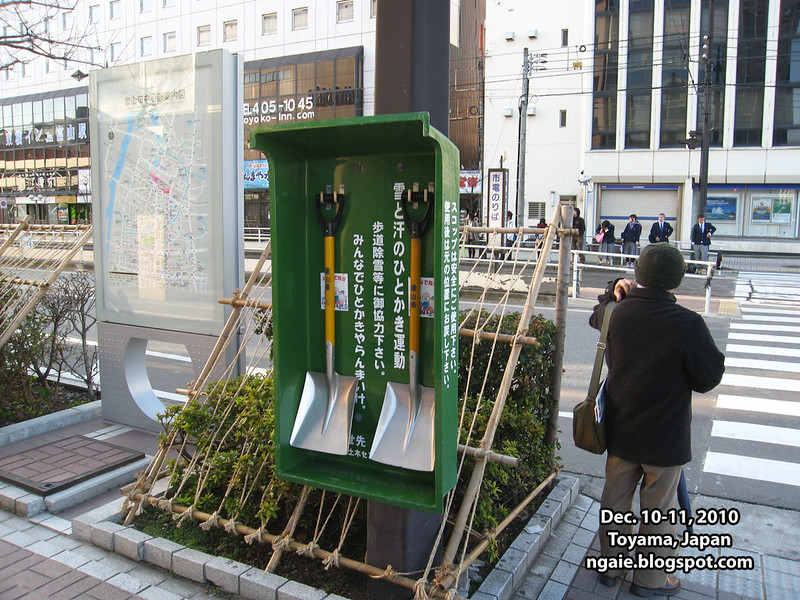
Tateyama had a cable car which was supposed to be an attraction however, because it was the winter season, nothing was open at all, and there was no one on the streets as well. Everything was just dead! It seemed like a ghost town!

No one in town except for us!
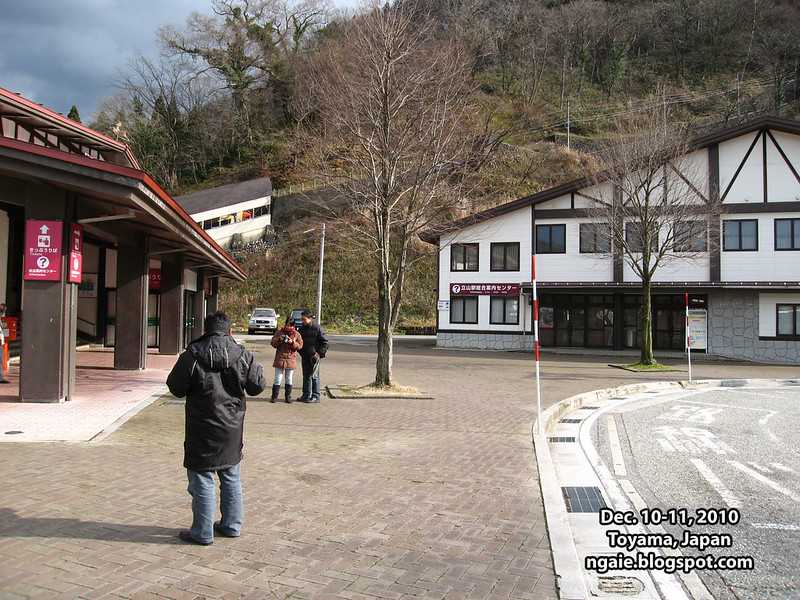
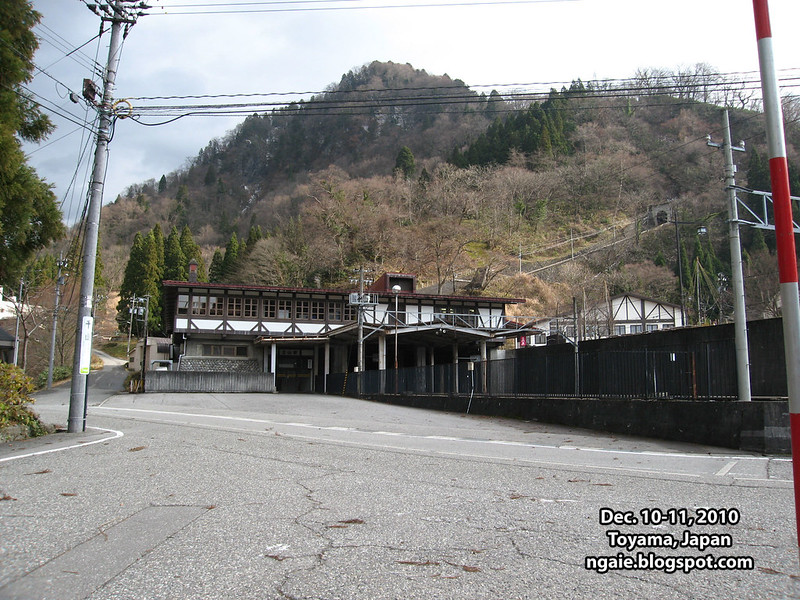
Some background information on Toyama, this LRT project and their efforts at city revitalization. Based on a summary I did prior to going on this study trip. (Only for urban planning/transport nerds)
Background Information
- Toyama City
- City Population: 420,000 (2005)
- Metro Population: 540,000 (2005)
- Located in the Hokuriku Region on Sea of Japan side of central Japan
- Largest city: Kanazawa
- 2nd Largest City: Toyama
- Largest city: Kanazawa
- Modal Share in Toyama City in 2006
- 72% - Private Transport
- 28% - Public Transport
- 72% - Private Transport
- Public Transport Companies
- West Japan Railway Company (JR West)
- JR Hokuriku line (east to west)
- Defunct Toyama Kosen line (from Toyama station to northern part of Toyama), now part of the LRT network
- JR Hokuriku line (east to west)
- Toyama Local Railway Company
- Tram (streetcar) network south of Toyama station
- Tram (streetcar) network south of Toyama station
- Toyama Light Rail Company
- LRT (Portram) network north of Toyama station
- LRT (Portram) network north of Toyama station
- West Japan Railway Company (JR West)
- City Population: 420,000 (2005)
Urban Problems
- Lagging behind Kanazawa in interurban competition
- Aging and declining population
- City population flat since the late 1990s
- Peaked in 2005 and predicted to decrease by 10% over the next 20 years
- City population flat since the late 1990s
- Suburbanization and hollowing of the city centre
- In 2005, in the city’s densest district, the population density was 40.3 persons/hectare (the lowest among all prefectural capitals in Japan)
- Studies show that 200 persons/hectare maximizes sustainability in terms of environment and quality of life
- Central shopping district’s retail turnover decreased by 40% from 1994-2004
- Administrative costs will increase in light of declining population (decreasing tax base) and low-density suburbanization
- In 2005, in the city’s densest district, the population density was 40.3 persons/hectare (the lowest among all prefectural capitals in Japan)
- High reliance on cars
- 2nd highest car ownership rate in Japan (1.73 vehicles/household in 2005)
- Bus ridership dropped by 1/3 from 1989-2004
- 30% of adult population has neither a driver’s license nor a car
- 76% female
- 71% are aged 60 and older
- 76% female
- 2nd highest car ownership rate in Japan (1.73 vehicles/household in 2005)
- Hokuriku Shinkansen connecting Toyama with Kanazawa to the west and Tokyo to the east due for completion in 2014
- Outflow of retail activity may increase due to easier access to Kanazawa
- Outflow of retail activity may increase due to easier access to Kanazawa
Urban Countermeasures
- City government pursuing the “Compact City” policy by using the development of the Toyama LRT Project as a vehicle to generate transit oriented development and compact development
Brief Timeline
- Number of passengers on the former Toyama Kosen line (operated by JR West) had decreased by a large amount even though the population along the line had been stable at about 45,000
- JR West shareholders strongly requested that the company divest itself from the unprofitable Toyama Kosen line
- Toyama city looked in the possibility of a town development that connected the north part of Toyama station with the existing commercial district on the south part of the station as part of the city regeneration plan
- Improvement in the city’s public transport system was badly needed to enhance the accessibility of the local people in light of the rapidly aging and declining population
- Improvement in the city’s public transport system was badly needed to enhance the accessibility of the local people in light of the rapidly aging and declining population
- The central government decided to built the Hokuriku Shinkansen from Tokyo to Kanazawa through Toyama
- Because of the planning for the new Toyama Shinkansen station, there were expectations that the existing lines (JR Hokuriku Line, former Toyama Kosen Line) would be elevated
- Because of the planning for the new Toyama Shinkansen station, there were expectations that the existing lines (JR Hokuriku Line, former Toyama Kosen Line) would be elevated
- Due to the low ridership and profitability of the Toyama Kosen line, 3 options were considered instead of just automatically elevating the line in preparation for the new station
- Option 1: Keep the Toyama Kosen line by elevating the rail infrastructure at the new Toyama station
- Option 2: Abolish the Toyama Kosen line and replace it with a local bus service
- Option 3: Convert the Toyama Kosen line into a new LRT system
- There is the option of connecting the LRT system to the existing tram network 10 years after the start of its services
- There is the option of connecting the LRT system to the existing tram network 10 years after the start of its services
- Option 1: Keep the Toyama Kosen line by elevating the rail infrastructure at the new Toyama station
- After a cost-benefit analysis, it was concluded that Option 3 had the highest new social benefit
- Former Toyama Kosen line operated by JR West donated to Toyama city for the conversion to LRT
- LRT system built with public and private stakeholders
- Private stakeholders
- Local firms invested in the LRT fund for its construction in anticipation for the boast in the local economy would receive upon the operation of the line
- JR West donated its money-losing Toyama Kosen
- Existing tram operator Toyama Local Railway Company invested capital so that the LRT would be integrated with the firm’s bus services
- Local firms invested in the LRT fund for its construction in anticipation for the boast in the local economy would receive upon the operation of the line
- Public stakeholders
- Toyama city government
- Toyama prefectural government
- National Police Agency
- Ministry of Land, Infrastructure and Transportation
- Gave permission for the operation of light rail vehicles on heavy and light railways thus exploiting the advantages of the LRT’s tram-train feature
- Gave permission for the operation of light rail vehicles on heavy and light railways thus exploiting the advantages of the LRT’s tram-train feature
- Toyama city government
- Private stakeholders

- 8 km line
- 10 stations (3 upgraded, 7 new)
- Average stop spacing of 0.9 km
- Average stop spacing of 0.9 km
- 7 new light rail vehicles produced by Niigata Transys using a design licensed from Bombardier
- Total cost of the project: 5.8 billion yen ($51.4 million USD) or $6.5 million/km
- Toyama Light Rail Company (the operator) expected to have annual debts of 20-30 million yen for the next 10 years ($177,000-266,000 USD)
Kato H., Shiroyama H., and Fukayama T. (2008). “Process Management in Public Transit Planning: Case Study of Introduction Project of Light Rail Transit in Toyama, Japan.” Transportation Research Record, 2042, 30-40.
Light Rail Now Production Team (2006). “Toyama: Tram-Train Streetcar Line is Model for Japan’s Light Rail Revival” Light Rail Now, < http://www.lightrailnow.org > (Nov. 18, 2010).
Muto, M. (2006). “A Study on Sustainable Urban Management Strategy in Japanese Local Cities: Through the Research on LRT Project in Toyama City”, Graduate School of Media and Governance, Keio University, 1-13.
Takami, K., and Hatoyama K. (2008). “Sustainable Regeneration of a Car-dependent City: The Case of Toyama toward a Compact City.” Sustainable City Regions: Space, Place and Governance, Springer, 145-162.

0 comments:
Post a Comment